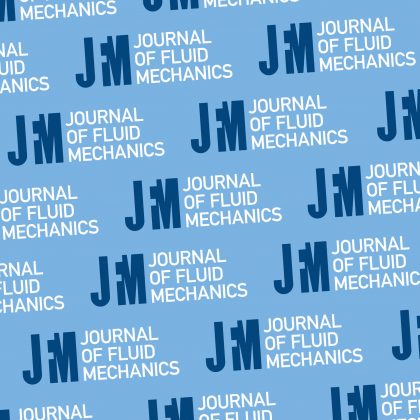Batchelor Prize 2020
Congratulations to Alexander J. Smits on being awarded the 2020 Batchelor Prize ‘for seminal contributions to our understanding of the structure of wall turbulence at very large Reynolds and Mach numbers, especially through the design of innovative experiments and measurement devices, and also for pioneering work on bio-inspired propulsion and on drag reduction using modified surfaces’. I sat down with Lex to discuss his thoughts on being awarded one of the most coveted prizes in Fluid Mechanics…
“It came as quite a surprise to be honest – I always thought it was for mid-career researchers and being at the end of my career I didn’t think I’d even be eligible!”
Smits recalls his reaction on hearing that he had been awarded the Batchelor Prize via a phone call with his colleague and good friend Jim Riley: “He left me a guarded message saying he had something important to talk about – the fact that it was such good news made it a double surprise! I really had no idea at all…”
Lex’s career in fluid mechanics began during his undergraduate days at the University of Melbourne where he completed a final year project with Tony Perry and his interest in turbulence began. “Not only is it academically challenging, but it’s visually stunning too. It combines the challenge of tackling an unsolved problem with the possibility of making a contribution to improving vehicles and saving energy.”
His first contributions saw him land at Imperial College London as a post-doctoral student working with Peter Bradshaw. When discussing his time in the UK, Lex fondly recalls a day trip to Cambridge that saw him have lunch with one of his idols Alan Townsend and his first meeting with George Batchelor at DAMTP. “He was often seen as a scary figure, and he was rather formal, but I always found him to be very nice.” Further interactions with George would follow as his role of Chief Editor of JFM meant that he would often correspond directly with authors, including a young Lex.
Moving onto the work for which he received the prize, we began by discussing turbulence and the creation of what Lex refers to as the ‘Superpipe’ at Princeton. “It allowed us to study very large Reynolds number turbulent flows in the lab, and in some sense helped to revive the field, as once people saw what was possible, it inspired them to build their own facilities capable of investigating similar flows.” The Superpipe, and the other new facilities, allowed Reynolds numbers ten times higher than anything seen previously to be reached, which meant being closer to the asymptotic limit, or as Lex put it “we could see where things end up”.
There were breakthroughs in the methods used to measure the properties of the turbulent flows too, with hot wire anemometry enabling measurements across the full range of small scales that were generated in the experiments. “The current measurement methods of the time were filtering out the interesting data so we had to come up with something new that would work in our setup, which meant making hot wires 20-30 times smaller”.
Smits’s work on bio-inspired propulsion has been the subject of this blog before, with his JFM Perspectives article on ‘undulatory and oscillatory swimming’ making a big splash in the field. “It was a tough challenge writing the perspectives article, but one I think I ultimately enjoyed – and that’s despite feeling almost paralysed for 6 months before I started! I just hope it’s useful for others.”
His interest in bio-inspired propulsion began 25 years ago when swimming with manta rays: “They impressed the hell out of me! And so, when I came back to Princeton, I set up a student project looking into manta ray swimming. One thing led to another and before you know it, I’m working with biologists, aerodynamicists, and materials scientists – it turned into a huge collaborative effort”. His main goal with this work was to develop the simplest models possible that capture the essential ingredients needed for swimming, and then try to apply this knowledge to help develop new underwater vehicles.
Lex’s work on drag-reduction was also application driven and was spearheaded by the US Navy and their interest in super-hydrophobic surfaces. “The existing approach was to trap air in the surface to act as a roller bearing for the water flowing over it, but the problem was that the air wouldn’t stay in the grooves. We instead used oil in the grooves and our experiments showed that it was possible to get up to 30% reduction in drag.”
In the future, Lex hopes to continue working on strongly perturbed turbulent flows, which he says “expose shortcomings in our current theories and give rise to unexpected new behaviours. The idea is to see how much of our understanding still holds, and how much new stuff we still have to learn.” We may learn more about this during the Prize Lecture at IUTAM in August where Lex will discuss ‘Turbulence in supersonic and hypersonic flows’.
We finished our discussion with what is often the most difficult question to answer in these circumstances, but one that we both agreed was important to ask – do you have any advice for young researchers looking to follow in your footsteps? “Don’t lose sight of why you got into the field in the first place. Do stuff that you like doing and make room for following your own interests. Oh, and I cannot stress the importance of thinking outside the box. Some of the most creative people in the world are working in turbulence which is what makes it so much fun!”





